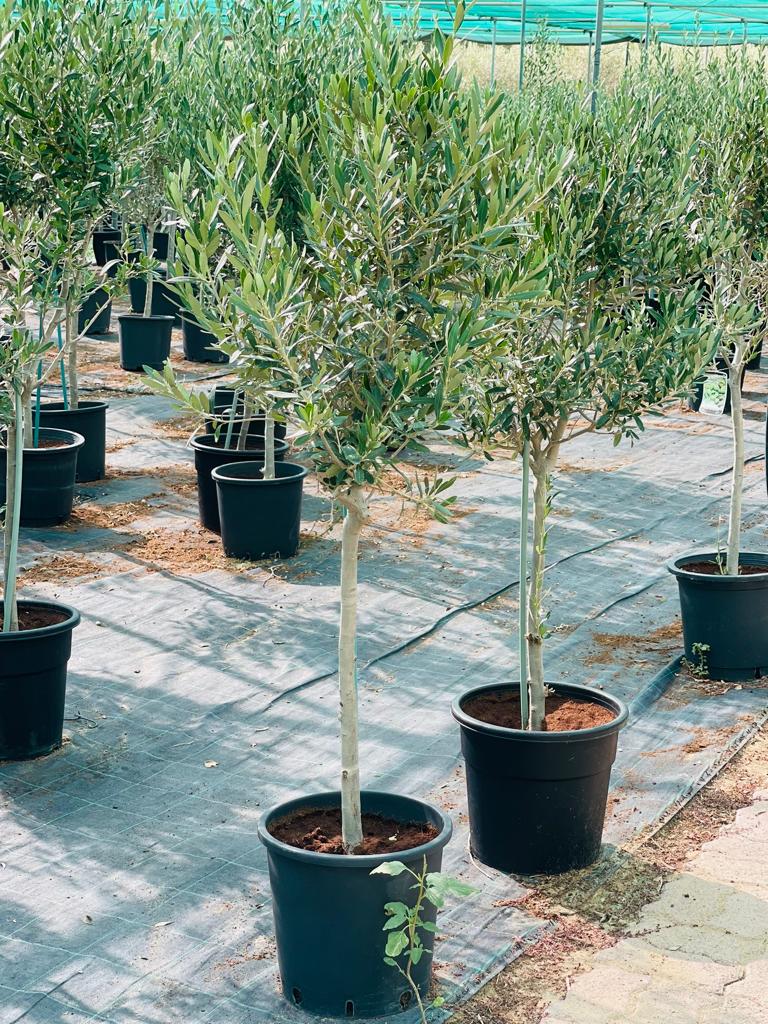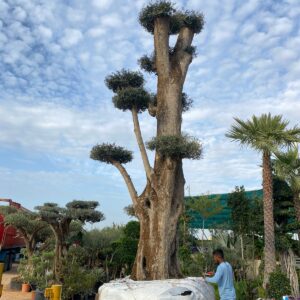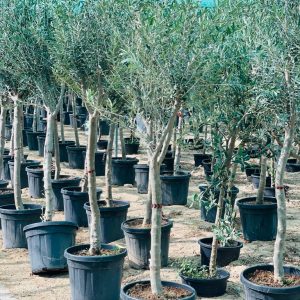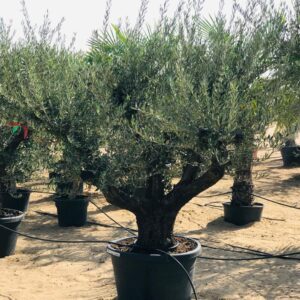Olive Tree (Olea Europaea)
Size: 1M+
Olive Tree (Olea Europaea) scientifically known as Olea europaea, is a small to medium-sized evergreen tree native to the Mediterranean region. It belongs to the family Oleaceae and is renowned for its historical and cultural significance, as well as its versatile uses.
Here are some key features and information about the Olive tree:
Olive Tree (Olea Europaea) Appearance:
The Olive tree (Olea Europaea) tree has a distinctive appearance with a gnarled trunk and silvery-green, lance-shaped leaves. The leaves are leathery and have a grayish-green color on the upper surface and a silvery underside, which helps reduce water loss. The tree can grow up to 30-40 feet tall, depending on the variety and growing conditions.
Olive Tree (Olea Europaea) Fruit:
The Olive tree (Olea Europaea) produces small, oval-shaped fruits called olives. These fruits are typically green when unripe and turn purplish-black when fully ripe. People harvest olives for their culinary uses, primarily in the production of olive oil. Olives have a rich, buttery flavor and people enjoy them in various dishes and cuisines worldwide.
Olive Tree (Olea Europaea) Longevity:
Olive trees earn recognition for their longevity, with some trees living for hundreds, and even thousands, of years. The oldest known Olive tree, located in Greece, estimates its age to be over 2,000 years.
Olive Tree (Olea Europaea) Adaptability:
Olive trees excel in adapting to dry, Mediterranean climates. They can withstand hot summers, mild winters, and poor soil conditions. However, to prevent root rot, they need good drainage. In regions with colder climates, people can grow Olive trees in containers and bring them indoors during winter or protect them using suitable measures.
Cultivation:
People primarily cultivate Olive trees for their fruit production. They grow them in orchards and provide full sun exposure for optimal growth. The trees can tolerate drought conditions but still benefit from regular watering, especially during dry spells or when establishing young plants. People often perform pruning to maintain the shape of the trees, improve airflow, and facilitate fruit production.
Propagation:
You can propagate Olive trees through various methods, such as seed germination, cuttings, and grafting. However, it’s important to note that growing Olive trees from seeds may result in variable characteristics, as growers typically propagate the trees through vegetative means to maintain desirable traits.
Cultural and Symbolic Significance:
Many Mediterranean countries attribute significant cultural and symbolic value to the Olive tree. People have cultivated it for thousands of years, associating it with peace, wisdom, and prosperity. The Olive branch, an ancient symbol of peace, has found use in various contexts, including Olympic games and religious ceremonies.
Sustainability and Environmental Benefits:
Olive trees are considered environmentally beneficial due to their ability to tolerate dry conditions, prevent soil erosion, and support biodiversity. Olive groves are often part of sustainable agricultural practices and contribute to the preservation of natural landscapes.
The Olive tree is not only a source of culinary delights but also holds deep cultural and historical significance. Its resilient nature, striking appearance, and versatile uses make it a beloved tree in many parts of the world.
Olive Tree (Olea Europaea) Olea europaea, commonly called common olive, is an evergreen tree that is native to the Mediterranean region. It typically grows to 6M’ tall with a rounded crown. Young trees have smooth gray bark, but trunks and branches will gnarl somewhat picturesquely with age. Opposite, elliptic to lance shaped leaves (to 3” long) are gray green above and silver-green beneath. Very small white flowers bloom in panicles (to 2” long) in summer on stems from the leaf axils. Flowers are fragrant. Flowers give way to oval green drupes (olives to 1.5” long) which ripen to black. Each olive contains a single pit. Olives from this species are commercially harvested as eating olives and for production of olive oils. A large number of different commercial varieties are grown for fruit production. Olive trees are one of the first trees to be cultivated. An olive branch is a symbol of peace.
Genus’s name comes from the Latin name for olive.
Specific epithet means of Europe.






Reviews
There are no reviews yet.